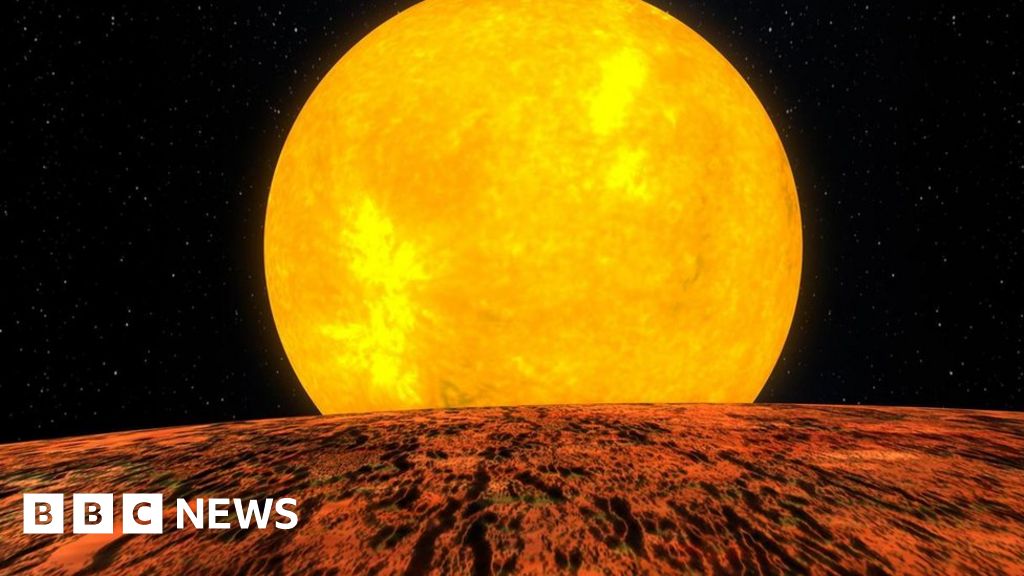
Astronomers say they have the first evidence of a head-on collision between two planets in a distant star system.
They believe two objects smacked into each other to produce an iron-rich world, with nearly 10 times the mass of Earth.
A similar collision much closer to home may have led to the formation of the Moon 4.5 billion years ago.
The discovery was made by astronomers in the Canary Islands observing a star system 1,600 light years away.
One planet - called Kepler 107c - is thought to have an iron core that makes up 70% of its mass, with the rest potentially consisting of rocky mantle.
Another planet further towards the star - known as Kepler 107b - is also about 1.5 times the size of Earth, but half as dense.
Violent system
Scientists believe the iron-rich planet was formed when it collided head-on and at high speed with another object, which ripped off the lighter material in its outer layer.
They calculated that the colliding planets must have been travelling at more than 60 kilometres (37 miles) per second at the time of impact.
Co-author Dr Zoë Leinhardt, from the University of Bristol, said the team used computer simulations to test their ideas. She told BBC News: "What you're seeing now is that you could have had two objects where 107c is, and they hit each other. And now you just have 107c.
"The other possibility is that 107c was hit several times by smaller objects. The problem with that observation is, why did that just happen to 107c? It seems a little bit easier for me to understand to do it only through one event, but it doesn't mean that there was just one event."
However, while the paper favours an iron-rich composition for 107c, Dr Leinhardt would only go as far as saying it was more dense than 107b.
A co-author on the paper, Dr Chris Watson of Queen's University Belfast, said this planetary system "would have been a violent place."
We are now seeing the leftovers of this high-speed collision between two objects, he said.
"We've found two planets in a very similar orbit around the same star, but with very different densities," he told BBC News.
"One is rocky, the other is made up of much denser material, probably iron.
"The only way you can really explain that is that one of them had a rocky surface which was stripped off in a joint collision."
Another idea, that radiation from the parent star stripped away gas from what would have been Neptune-sized planets, could be discounted. This process would have resulted in 107b being more dense than 107c.
The research, published in the journal Nature Astronomy, raises new questions about how planetary systems form and evolve in distant parts of the Universe.
Dr Leinhardt explained that the planets had probably formed further away from the star. They then migrated inwards, while the gravity of the parent star was pulling gaseous material towards it - a process known as accretion.
"As that accretion was occurring, the planets were being torqued, dragged and were interacting with that gas disk - and they moved too. As they moved, they ran as close into each other as they could," she explained.
It may have been during this phase that the impact occurred: "Maybe as that notional active migration was happening, and the material was accreting onto the central star, it caused an instability somewhere - it shook something up," Dr Leinhardt said.
The planets studied rotate around a sun-like star called Kepler 107 in the constellation Cygnus.
Follow Helen and Paul on Twitter.
Read Again https://www.bbc.co.uk/news/science-environment-47130728Bagikan Berita Ini















0 Response to "Cosmic pile-up gives glimpse of how planets are made - BBC News"
Post a Comment